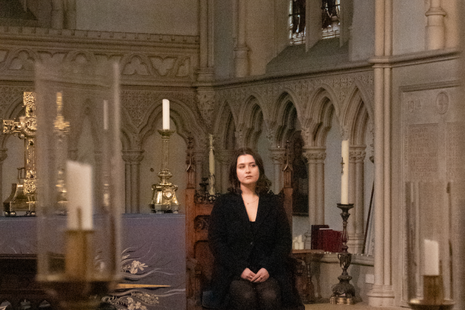A guide to Cambridge venues
Bethinn Feely asks how a few of the biggest venues in Cambridge theatre shape the atmosphere of the shows staged there?

There are what sometimes feels like countless theatre locations in Cambridge. Too many for most people to make their way around all of them, and all possess a variety of different pros and cons. Some might have great tech capability, some a big stage with lots of space to move, or movable audience seating. This is a guide for both theatre novices and director/producers who want to grasp a clearer feeling of how a theatre can shape the tone or impact of their show, rather than those of you who know every venue inside out.
I’m writing from the perspective of an audience member, not being much of a performer myself. But the venue sets the stage long before the audience sits down to watch the show. For novice theatre goers, here is a short list of what I consider the most notable strengths of (a few) Cambridge theatres, which might hopefully inspire you to seek out a show at a new venue this term.
“The venue sets the stage long before the audience members sit down to watch the show”
Seating: The first show I ever saw was at the Corpus Playroom off St. Edward’s Passage, a small, even cosy venue. The most notable thing about the Corpus Playroom is its L-shaped seating. This lends itself to the creation of an absorbing atmosphere, where the audience encircles two sides of the stage. The seats only go a few rows back, so every seat is relatively close to the stage and is broken up into smaller sections by being split in two by the shape of the theatre.
This makes the presence of the stage overwhelming in the space – it is the corner in which all attention is driven. For an intimate feel and intense drama, the shape of the theatre is a massive benefit. The seating set-up also allows for greater realism; the actors can face two sides of the stage whilst still facing the audience. So, they can turn around, fully turn from each other, without turning their backs on the audience, allowing a dynamic movement that other stages might not.
Floor space: Pembroke New Cellars in Pembroke College is a unique performance space with no stage or raised area. The space is more of a small multipurpose room, but this, I find, has helped rather than hindered the shows I have seen there. The one-level space allows actors to walk freely around the room, encircling and absorbing the audience in the action. The space also means the seats can be moved into whatever shape best suits the play. Whether that’s the audience facing each other in two rows, in two columns facing forward, or even in a circle, the venue allows for a lot of creativity in how the seating is set up. This has created some shows where the audience has been nervously looking over their shoulders.
“Shows where the audience has literally been nervously looking over their shoulders”
Lighting: Lady Fitzpatrick Hall in Queens’ College has some amazing lighting and tech capabilities that are suitable for the size of the venue. Lady Fitzpatrick Hall is a venue equipped with multicoloured lights, spotlights, and atmospheric lighting from the surrounding balconies. These aspects of a venue undoubtedly expand the prospects for drama and intensity of mood a director can hope to create, and are an exciting prospect for any lighting crew.
Props/costume: The ADC on Park Street perhaps feels like the most ‘formal’ theatre space in Cambridge. You first walk into the front desk, and then (if you’re early to the show) up to the large reception room bar – a place where you might often run into members of the cast and crew after a show. The theatre perhaps doesn’t lend itself to the sensitive, student-written personal shows you might see at other college venues.
However, the ADC has the amount of stage space and costuming capability to house bigger shows with a larger cast. The prop and costume stores might be the biggest draw of the ADC theatre, and it can undoubtedly fit more audience members than most. Performances like musicals, such as last term’s fresher’s musical, can be catered to by the audio features of the venue and the room’s vocal reverberation.
The distance between the audience and actors creates a formality which is needed for higher-production-value shows or big musical and dance numbers, so the action doesn’t feel humorous by being too intimate. Whilst not as intimate as other venues, the ADC adds a layer of professionalism that other venues might not always possess.
We’re incredibly lucky in Cambridge to have such a variety of venues, there is no theatre I’ve been to that doesn’t have some unique aspect or charm. As an audience member, these locations can shape our experience of a play nearly as much as the experience of the actors on stage, producers, the costume and prop designers, the lighting crew, and how fully the writers and directors can fulfil their vision.
 News / East West Rail proposes new Cambridge East station26 November 2025
News / East West Rail proposes new Cambridge East station26 November 2025 News / Uni registers controversial new women’s society28 November 2025
News / Uni registers controversial new women’s society28 November 2025 Comment / Cambridge is woke – that’s no bad thing 28 November 2025
Comment / Cambridge is woke – that’s no bad thing 28 November 2025 News / DfE counter-terror unit contacted Cambridge over PalSoc speaker concerns28 November 2025
News / DfE counter-terror unit contacted Cambridge over PalSoc speaker concerns28 November 2025 Music / Spotify unwrapped: 2025 predictions28 November 2025
Music / Spotify unwrapped: 2025 predictions28 November 2025









